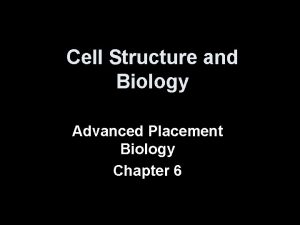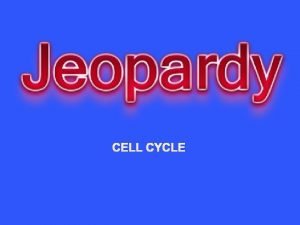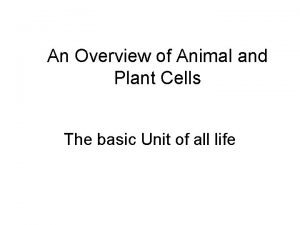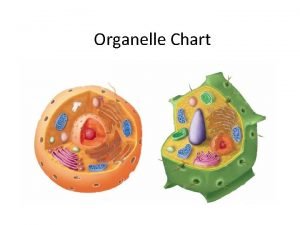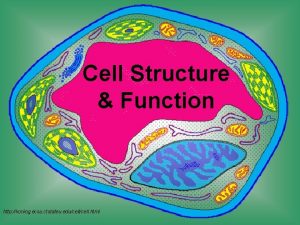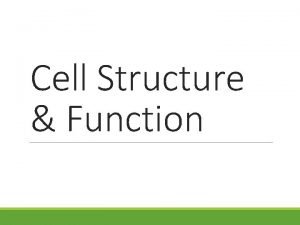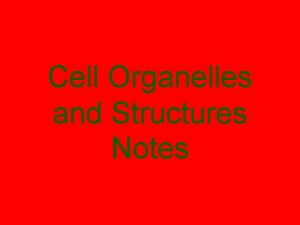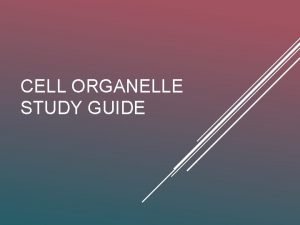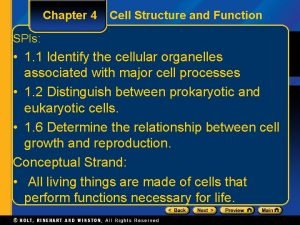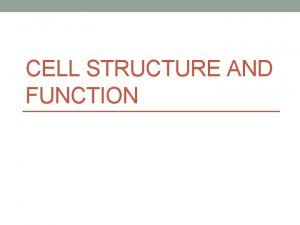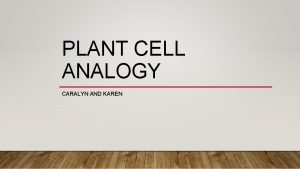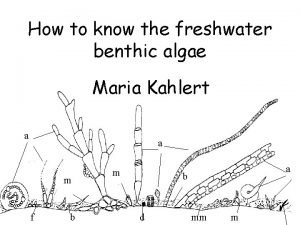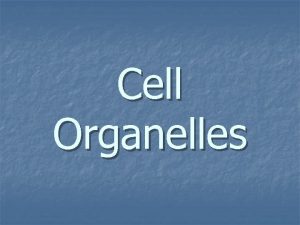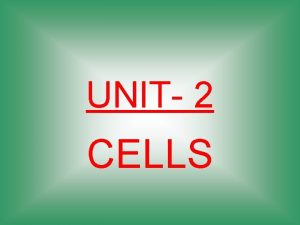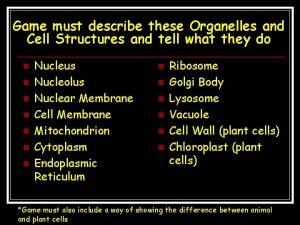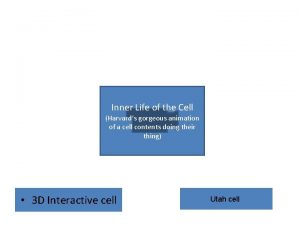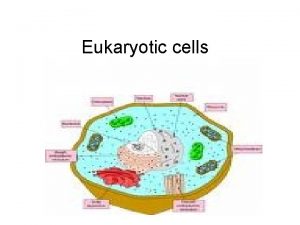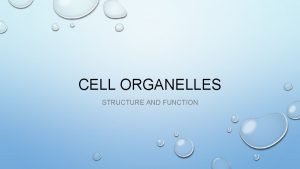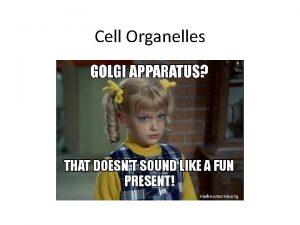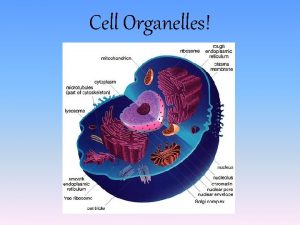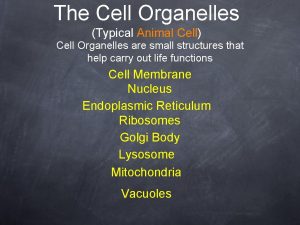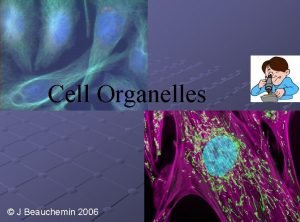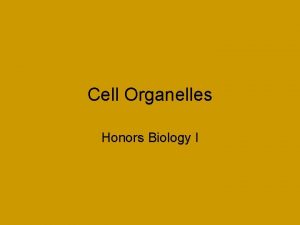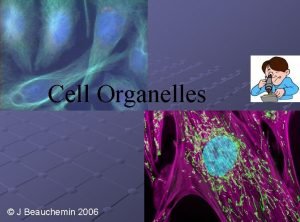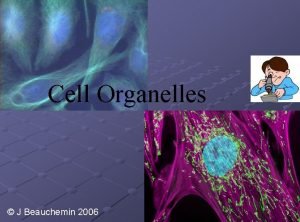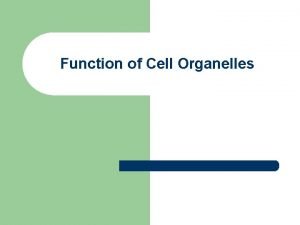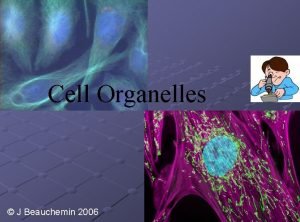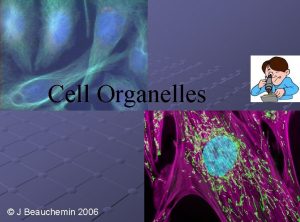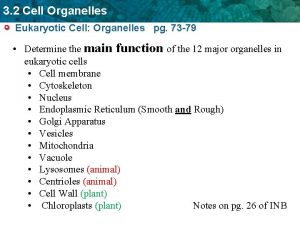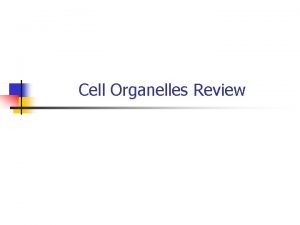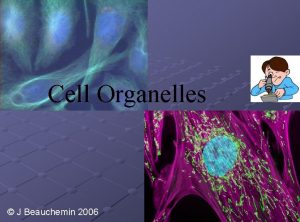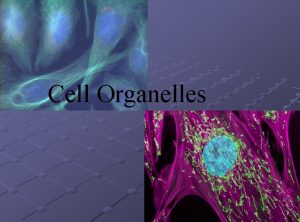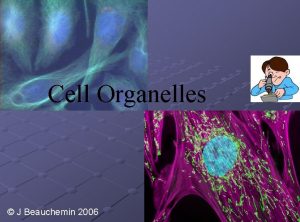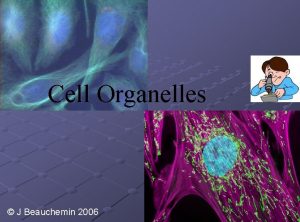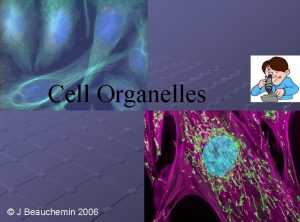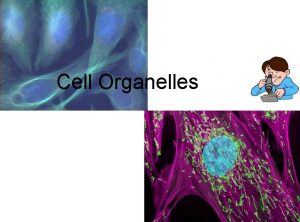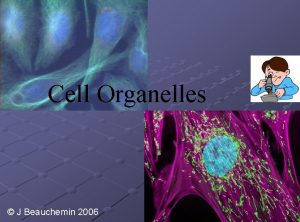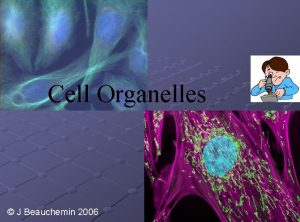3 2 Cell Organelles Homework In the middle























- Slides: 23

3. 2 Cell Organelles Homework In the middle section of pg. 24: Draw a tree map classifying Prokaryotic cells, Eukaryotic cells, and Viruses Cells and Viruses Prokaryotic Eukaryotic Viruses

3. 2 Cell Organelles Draw a tree map classifying Prokaryotic cells, Eukaryotic cells, and Viruses Cells and Viruses Prokaryotic • No nucleus Eukaryotic • Nucleus Viruses • DNA in protein Coat • No organelles • Organelles • Needs a host • Single-cellular • Multi-cellular • Antibiotics do not work on them • DNA in cytoplasm • And Single-cellular • DNA in nucleus • Vaccines prevent

3. 2 Cell Organelles On the bottom of pg 24: Compare and contrast a prokaryotic cell and a eukaryotic cell in a double bubble map.

3. 2 Cell Organelles Cells tend to be microscopic No nucleus Has a nucleus All are produced by other cells Always single celled Prokaryotic cells No membrane -bound organelles All cells are enclosed by a membrane Basic unit of life All cells are filled with cytoplasm. Eukaryotic cells Has membranebound organelles

3. 2 Cell Organelles KEY CONCEPT Eukaryotic cells share many similarities. Plant Cell Animal Cell Can you find some similarities? ?

3. 2 Cell Organelles Main Ideas • Cells have an internal structure • Several organelles are involved in making and processing proteins • Other organelles have various functions • Plant cells have cell walls and chloroplasts STANDARDS • • • 1. e Students know that usable energy is captured from sunlight by chloroplasts and is stored through the synthesis of sugar from carbon dioxide 1. g Students know the role of the mitochondria in making stored chemical-bond energy available to cells by completing the breakdown of glucose to carbon dioxide 1. j Students know how eukaryotic cells are given shape and internal organization by a cytoskeleton or cell wall or both

3. 2 Cell Organelles Like your body, eukaryotic cells are highly organized structures.

3. 2 Cell Organelles • Skin: receives sensory information (touch) protects • Intestines: digest food • Kidneys: Filter waste • Bones: protect and support other organs

3. 2 Cell Organelles • Cell membrane: receives messages from other cells • Separates interior material from outside environment • Selectively permeable (only certain things can move in an out) How can we compare the cell membrane to our skin?

3. 2 Cell Organelles • The cytoskeleton is made of small protein subunits that form long threads, or fibers, that crisscross the ENTIRE cell.

3. 2 Cell Organelles – provides strength – helps position and transport organelles – assists in cell division – supports and shapes cell How can we compare the Cytoskeleton to our human Skeleton?

3. 2 Cell Organelles • The nucleus stores genetic information or DNA (deoxyribonucleic acid).

3. 2 Cell Organelles • protects the DNA • The nucleolus is a dense region where tiny organelles essential for making proteins are assembled Nuclear envelope

3. 2 Cell Organelles There are two types of endoplasmic reticulum. – rough endoplasmic reticulum Have bumps called ribosomes which link amino acids together to form proteins

3. 2 Cell Organelles – smooth endoplasmic reticulum Makes lipids and performs specialized functions such as breaking down drugs and alcohol.

3. 2 Cell Organelles Golgi apparatus- processes, sorts, and delivers proteins to different parts of the cell Ex: like a post office

3. 2 Cell Organelles • Vesicles transport materials from place to place within the cell. Separate chemicals from each other until they are going to be used in a chemical reaction Ex: Mailman

3. 2 Cell Organelles • Mitochondria supply energy to the cell. – Chemical reactions take place that convert the molecules you eat into usable energy

3. 2 Cell Organelles • Vacuoles hold materials needed by the cell such as water, food molecules, ions, and enzymes Animal cell Plant cell

3. 2 Cell Organelles • Lysosomes contain enzymes. They defend the cell from invading bacteria and viruses.

3. 2 Cell Organelles Centrioles help divide DNA between splitting animal cells (mitosis and meiosis). They also form cilia (hair-like structures) and flagella (tail-like structures). *only in animal cells

3. 2 Cell Organelles • A cell wall gives shape to the cell and provides protection. Connect together to support the entire organism. *Only in plants

3. 2 Cell Organelles • Chloroplasts convert solar energy to chemical energy. They carry out photosynthesis *Only in plants
 Label the organelles in the composite cell
Label the organelles in the composite cell During interphase a cell grows, duplicates organelles, and
During interphase a cell grows, duplicates organelles, and Label the organelles in the composite cell
Label the organelles in the composite cell Vacuole facts
Vacuole facts ;
; White blood cell organelles
White blood cell organelles Cytoplasm
Cytoplasm What is the organelle of walls and studs
What is the organelle of walls and studs Which of the following pairs contains unrelated items?
Which of the following pairs contains unrelated items? Organelles graphic organizer
Organelles graphic organizer Mitochondria double membrane function
Mitochondria double membrane function Endoplasmic reticulum analogy house
Endoplasmic reticulum analogy house Cell organelles
Cell organelles Cell organelles graphic organizer answer key
Cell organelles graphic organizer answer key What is this cell
What is this cell Plant cell
Plant cell Cell organelle game
Cell organelle game Inner life of a cell
Inner life of a cell Centrosoma
Centrosoma Golgi vesicles function
Golgi vesicles function Robert hooke 1665
Robert hooke 1665 Cell organelles review
Cell organelles review What is the smallest organelle in a cell
What is the smallest organelle in a cell Jack prelutsky homework oh homework
Jack prelutsky homework oh homework
